Do you hear the daily bad environmental news and think to yourself, “I’ve got to do something, but what?!” Entomologist Doug Tallamy, the author of Nature’s Best Hope, wants you to plant natives (as does wildlife). Planting natives addresses the climate crisis (native plants require less water and fewer pesticides and fertilizers) while simultaneously addressing the extinction crisis (planting natives supports ecosystems and restores biodiversity).
Insects support everything yet a recent study in the journal Nature states that insects have declined “almost 50% in the abundance and 27% in the number of species.” The study links these losses to climate change and land use. Because insects are “The little things that run the world,” as Edward O. Wilson put it, if they go, we go. But we can take action!
The good news is that we can fix our ecological problems by indulging rather than sacrificing.
— Douglas W. Tallamy, Nature’s Best Hope
Homegrown National Park
Our National Parks are too small and widespread to preserve and regenerate wildlife. In Nature’s Best Hope, Doug Tallamy proposes we build Homegrown National Park, a grassroots effort to conserve nature by converting private yards into nature corridors. Filled with native plants, these yards will increase and reconnect wildlife habitats across the country. Every private home can participate in this extension of our National Parks. And individual homeowners need not be master gardeners to start. I’m proof of that!
If you’d rather hire someone to do the work, start your search here to find a restorative landscape designer.
And if you don’t have a yard, you can help get natives in the ground in many other ways. Volunteer at a local arboretum, community garden, school garden or park. The California Native Plant Society has several positions open for volunteers or interns, for example. Your state or province likely does also. Go here for a list of native plant societies in North America.
Silent yard
Before the drought, our front yard followed the typical American design—a manicured lawn that butted up against a small bed filled with “pretty” plants growing below the front windows. Insects that evolved to eat native plants wouldn’t have found much food. Birds wouldn’t have found insects. (And they still won’t find much but I’m working on it!) Insects and birds searching for food in this typical urban landscape are like me searching for dinner at a gas station. As a result, our yard is way too quiet.
So, inspired by two of Tallamy’s books, Nature’s Best Hope and The Nature of Oaks, I’m converting the yard slowly, documenting (milking?) my progress for this blog and hoping to convince some of you to join me on my quest.
I’ve outlined an 8-week challenge below and once a week I’ll post about it on Instagram, Facebook and Twitter, along with my progress. Posting about this challenge will help keep me honest, motivated and progressing.
Week 1: Read Nature’s Best Hope
After reading this New York Times bestselling book, my yard and I will never be the same! Buy it or borrow it from the library. Or watch one of Doug Tallamy’s talks. (Or do both.) You’ll find his talks all over YouTube. The one below was recorded on April 6th.
Week 2: Take plant inventory
To determine where to start, figure out what you have growing in your yard. You can use a guidebook to figure this out or a plant-identifying app. When I took a few pictures of a volunteer mystery tree in my yard with one of those apps, it gave me three results. So I deleted it and have been using Google image search on my phone instead. It seems to work just as well. You may have a better app though.
Every time I Google a plant, the search results come back as non-native and I want to tear my hair out. Instead, I’m tearing these non-natives out, albeit slowly because I (and my family) want some sort of plan beforehand and also because I’m a bit lazy.
A partial inventory of my yard
We have not only non-natives but also invasives in the yard. Unchecked, invasives will crowd out natives, decimate habitats and eventually cause native plants and the wildlife dependent upon them to go extinct. Tallamy calls invasives ecological tumors.
These non-natives or invasive plants include:
- Stinking iris, Iris foetidissima, native to Europe. We’ve pulled so many irises out, both this variety and others. Although irises will take over a yard if left to their own seed-spreading devices, this stinking plant does not appear to be invasive. Other irises are.
- Fig tree, Ficus carica, native to the Mediterranean and Western Asia. California produces most of the figs in the US. Unfortunately, these invasive plants escape farms and invade nature preserves and parks in the state. A critter must have planted this volunteer for us. I love figs. I’ll leave this for now as I’m not ready to give up picking fruit from the yard. Blackberries are native so I will have to find some plants.
- Geranium, Pelargonium hortorum, native to South Africa. This non-invasive plant can stay for now. It doesn’t spread all over the place like some of the other plants.
- Nasturtiums, Tropaeolum majus, native to South American and Central America but non-invasive here. These self-seeding flowers have taken over the side yard. The edible leaves and flowers taste peppery.
- Boxwood, Buxus, native to Europe and Asia. I planted six small plants when my kids were little. They filled in within a few years into a hedge.
- English holly, Ilex aquifolium, native to (no surprise) Britain (and Europe) and invasive in California. Honestly, I hate the look of this plant here. It is so out of place. The rats seem to like it though and will build nests inside the stuff. We’ll have to be careful of the sharp leaves (and rats) when we finally rip the thing out and replace it.
- Privet, Ligustrum lucidum, native to China, Japan and Korea. These invasives pop up everywhere! Pulling them out is like playing plant whack-a-mole.
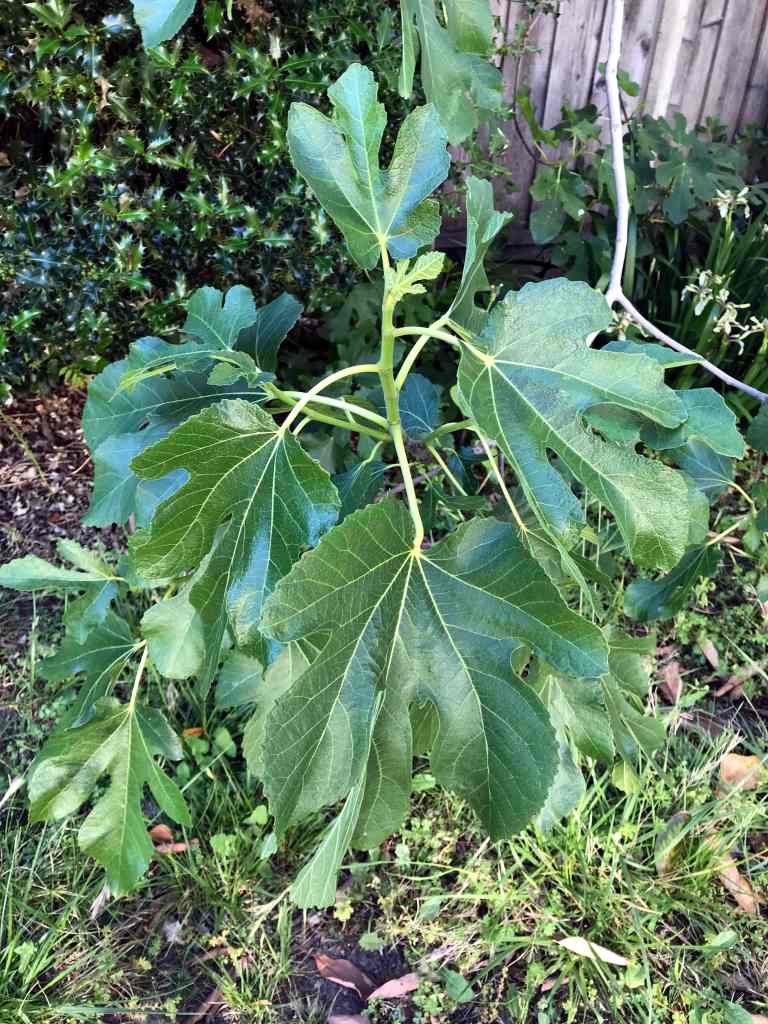

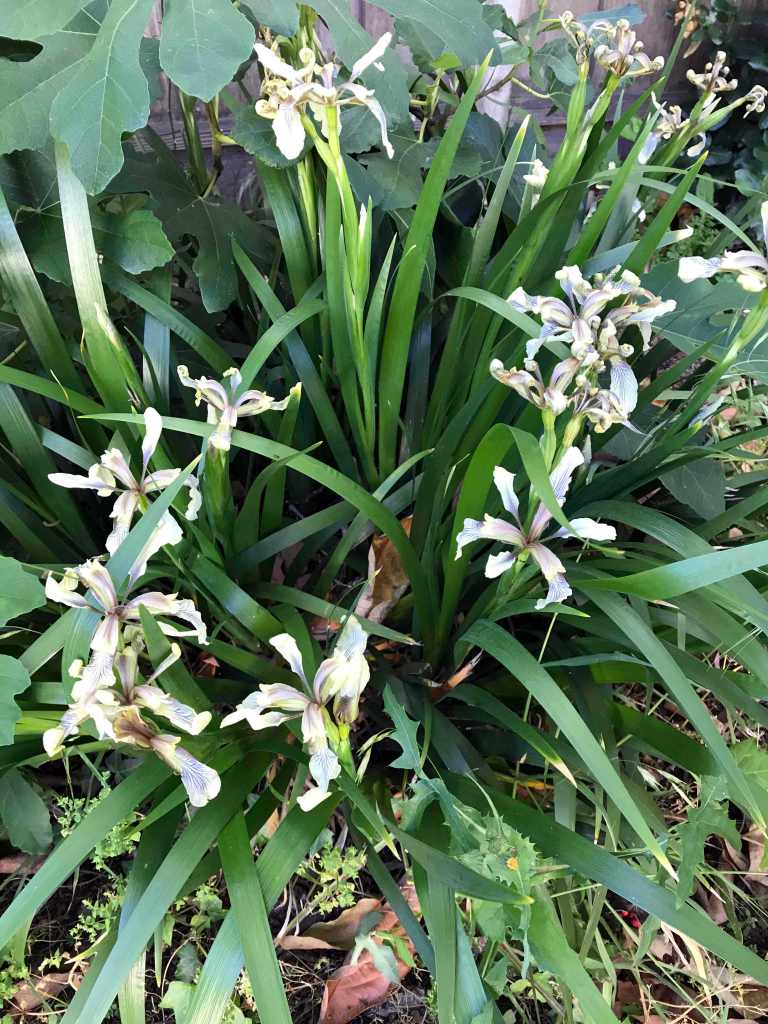

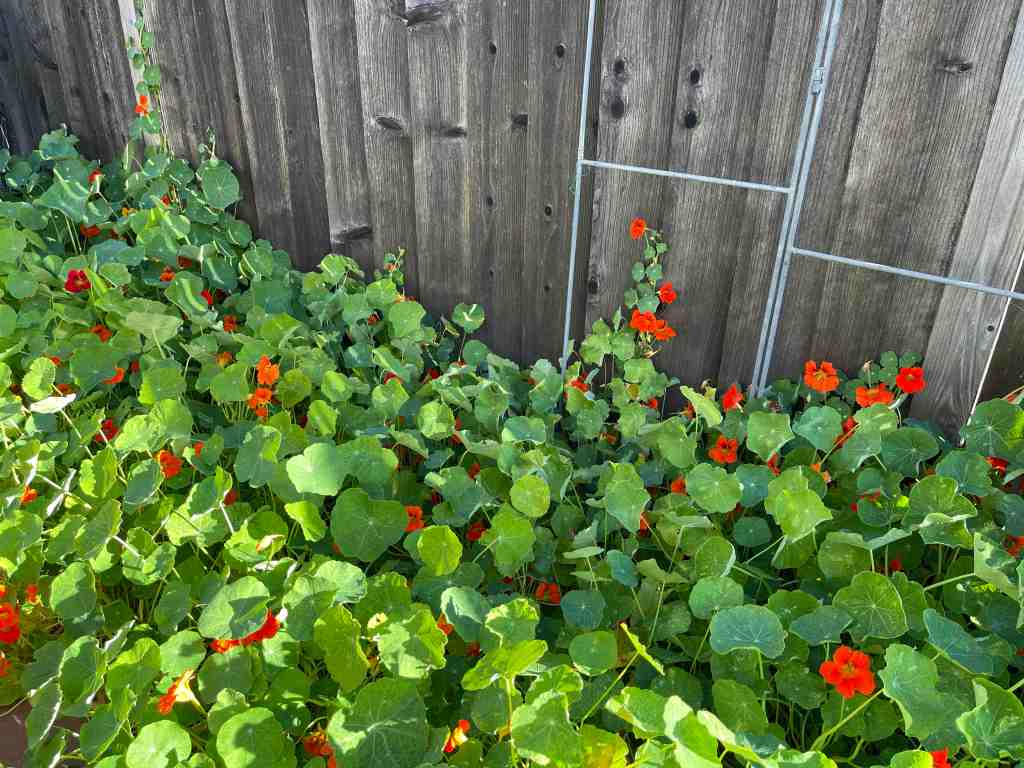
According to my new bible, Nature’s Best Hope, I don’t have to tear out all the ornamentals. I will leave some of them, like the boxwood and nasturtiums. But the invasives have to go. We have so many beautiful natives to choose from to replace these! We’ll talk about replacements in Week 4.
Week 3: Commit a section of your lawn to planting natives
You may be participating in “no-mow May.” During the month, people refrain from mowing their lawns in order to provide habitat and food for insects such as bumblebees, which dine on dandelion nectar.
We’ve been doing “no-lawn drought.” We stopped watering. The lawn died. In the spring, in part thanks to December rains (which abruptly ended in January), lush green “weeds” overtook the yard, supporting and making many bees and ladybugs happy.
Well, our less-enthusiastic city sent us a citation, demanding we remove the weeds. I suppose model citizens would have doused the offending plants will heavy applications of RoundUp. Instead, we pulled out most of them. Some have returned. We’ll have to keep them tidier. We’ve also planted some natives out there but they will take a while to fill in the landscape—and we need more of them.
“My, what a big lawn you have!”
Lawns were designed to be useless. Owning unproductive land that serves no purpose indicates status and wealth. And in fact, lawns are actually worse than useless:
In the United States, lawn irrigation consumes on average more than eight billion gallons of water daily. In fact, lawn watering accounts for 30 percent of all water used during the summer in the East and up to 60 percent in the West. […] 40 percent of the chemicals used by the lawn-care industry ar banned in other countries because they are carcinogens. Scientists are not guessing about this: Seventy-five studies have documented the connection between lawn pesticides and lymphoma, for example.
Nature’s Best Hope, page 48
You may not want to tear your entire lawn out. (If you do, go here for instructions on how to do it.) But you could plant small oak trees or a patch of milkweed plants for monarchs with very little effort, while keeping your yard looking presentable.
Week 4: Choose keystone native plants
Like keystones in the center of a Roman arch, certain native plants support entire ecosystems.
We know that some [native] genera, such as Quercus (oak), Prunus (cherry), and Salix (willow), host hundreds of caterpillar species, while for others, such as Cladrastis (yellowwood) and Empetrum (crowberry), there are no records at all of caterpillars using them. This is interesting in itself, but when Shropshire assembled data for each county, we saw that this pattern held everywhere and we could quantify it: wherever we looked, about 5 percent of the local plant genera hosted 70 to 75 percent of the local Lepidoptera species!
Nature’s Best Hope, page 139
Without keystone plants, ecosystems fall apart. “Landscapes that do not contain one or more species from keystone genera will have failed food webs, even if the diversity of other plants is very high.” (Nature’s Best Hope, page 206). In the US, keystone plants include oak, cherry, willow, birch, cottonwood and elm trees and herbaceous goldenrods, asters and perennial sunflowers.
“But how do I choose the right ones?” you may ask. Search for native trees and plants suitable for your county—down to your zip code!—at National Wildlife Federation’s plant finder. (NWF based this tool on a massive database that Tallamy’s research assistant, Kimberley Shropshire, created.)
Next, find native plants and seeds
When I recently looked around one of the big chain nurseries, non-native, ornamentals filled the shop floor. When I asked a staff member for help, he couldn’t. My cash and I left. We all have to ask our nurseries to carry native plants to change the status quo. To find native seeds and plants online, search here.
If you live in California, check out calscape.org, part of the California Native Plant Society. I am obsessed with this site. I can keep a wish list of plants in my account, search for suitable companion plants and find local native plant nurseries! Through the site, I found Grassroots Ecology Nursery and am very happy with the plants I bought there. Your state’s or province’s native plant society may also have links to native nurseries.
Week 5: Provide bee support
Bees pollinate about a third of our crops. And, like other insects, their populations have plummeted. I guess that’s okay if, for every meal, you enjoy eating corn, soybeans and rice—crops that don’t require pollinators—until blight wipes out those monocultures.
Tallamy recommends planting for bee species that require specific plants. Take care of these specialist bees and you take care of the honeybees and bumblebees—the generalist bees—which use a wider range of plants. Perhaps you picked goldenrod and asters as your keystone native plants last week. These plants support specialist bees and thus all bees.
Bee shelter
Bees also need shelter. Ground nesting bees require loose soil (so not a lawn compacted by foot traffic and lawnmowers). Wood nesting bees nest in, well, wood. You can buy bee hotels with many rooms but if a predator stumbles upon it, it can wipe out all the bees in one fell swoop. Tallamy recommends scattering several small bee blocks throughout the yard.
One of our fruit trees died and in Week 5, I plan on turning it into a nesting site for bees—a snag. In a forest, various wood-boring insects create holes in dead trees, holes that bees can later nest in. In my yard, I’ll speed things up with a drill. Go here for more information on creating snags in your yard. And go here for information from Michigan State University on building and managing bee hotels.
Week 6: Pull invasives, plant natives
Roll up your sleeves and get to work! You’ll continue this work during Weeks 6, 7, 8… and beyond.
I’ve pulled several irises to make space for a few native plants. The privets can go next. By the time I reach this Week 5 step, I will have more of a plan.
As I work in the yard, I stick to the following maxim: Whatever grows in our yard, stays in our yard—kind of like Las Vegas, but seedy in a different way. Unraked leaves provide shelter for caterpillars, long grasses become mulch once dried out, dead branches offer shelter for birds and bees and so on. Why toss all of this stuff only to go out and spend hard-earned cash on commercial versions?

The native plants I’ve adopted—so far
So far, I’ve planted two tiny Coast Live Oaks. If I do nothing else in my yard, I have improved it (assuming my trees survive!). Among the most important plants for wildlife, oaks support hundreds of types of caterpillars. I’ve also planted milkweed, hummingbird sage, goldenrod, sagebrush (cowboy cologne), asters and California wildroses.
I’ve planted most of these in multiple spots to determine which native plants do best where. While the backyard milkweed plants, for example, look healthier than those in the front, the cowboy sage has doubled in size in the front in a little over a month. In the back, it looks quite sad. The wildrose I planted in the “formerly known as lawn” dwarfs the wildrose a few yards away in the flower bed.
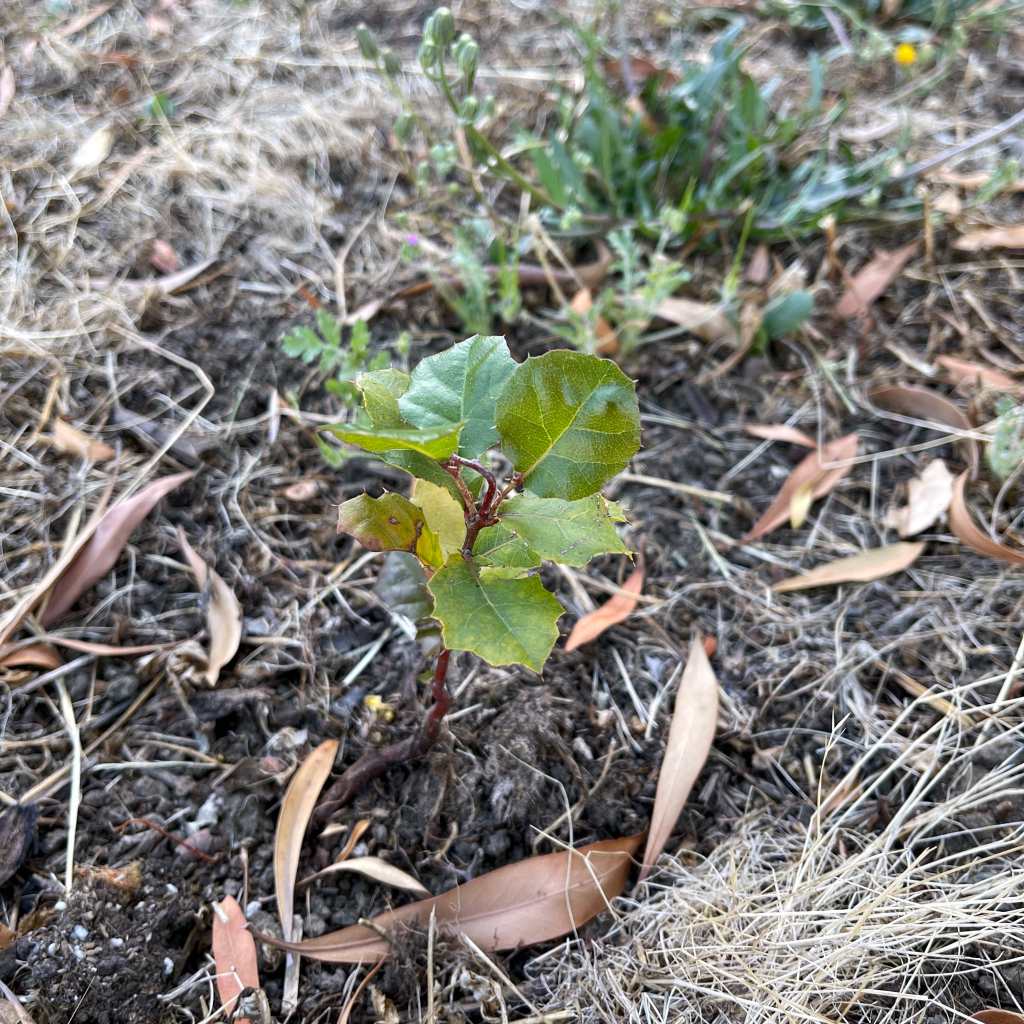
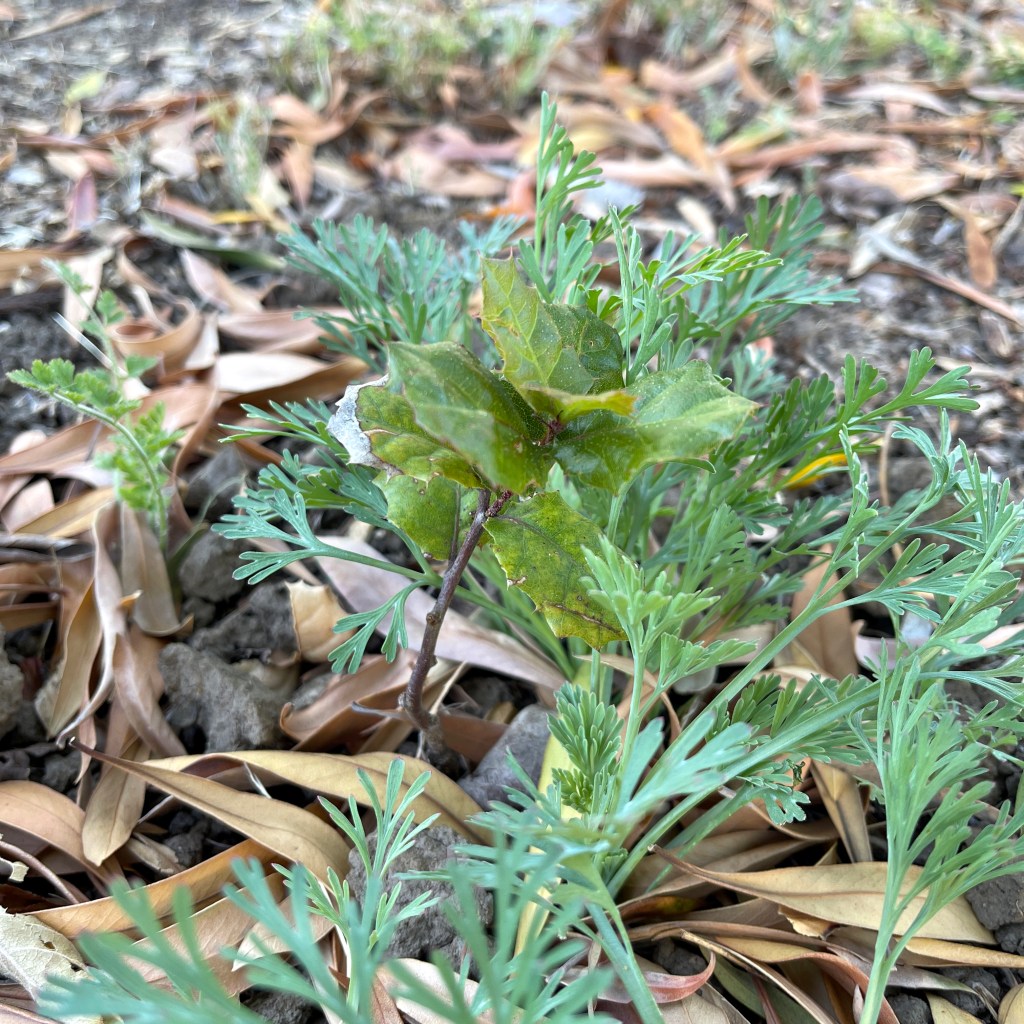
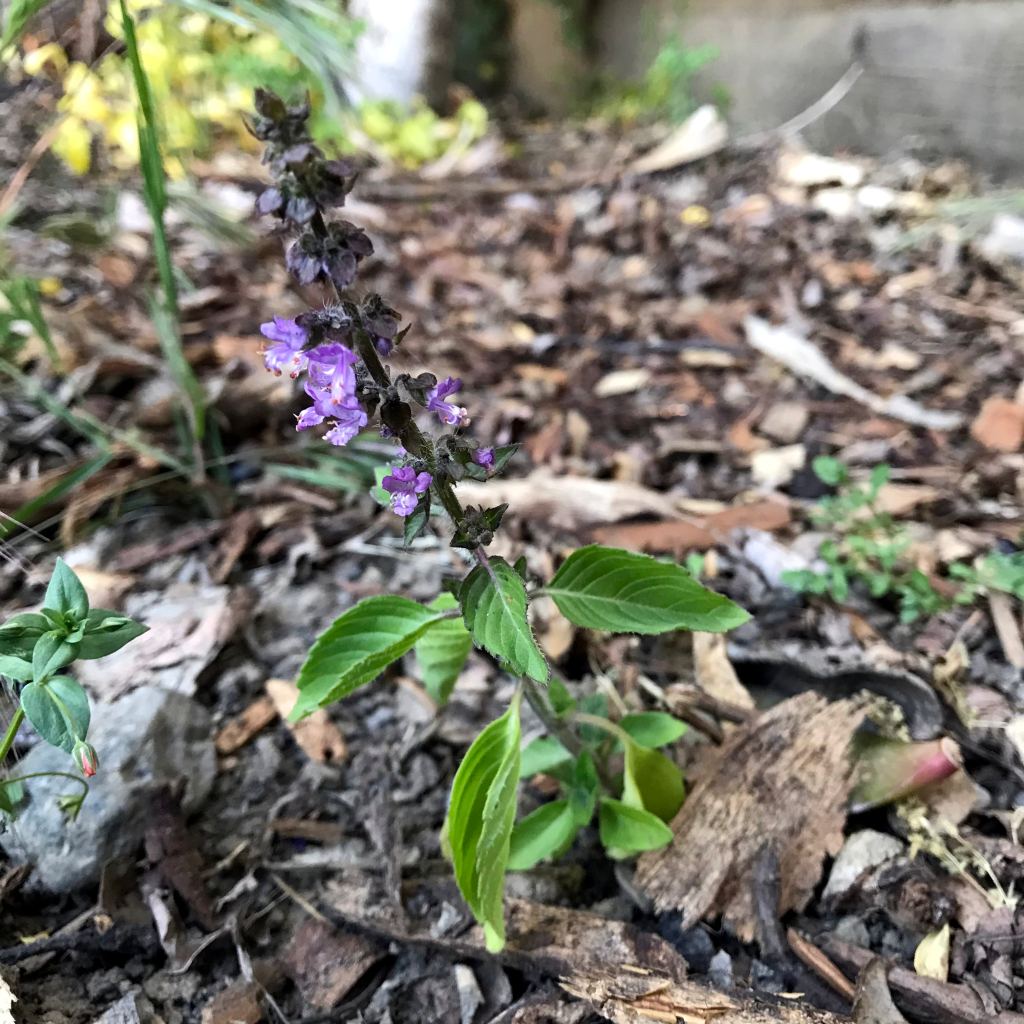




Week 7: Recruit your neighbors to plant natives
After my native plants have grown a bit, I’ll post a picture of them on Nextdoor, offer a couple of plants to neighbors (I grew extra milkweed to give away) and mention Homegrown National Park. I hope to persuade at least a couple of neighbors to plant more natives. If you live in an HOA, bring native plants up at a meeting. Going to a block party? Bring some native plants or seeds. We have a wonderful community garden, with monthly plant shares—another good venue for spreading native love. Find a community garden here.
Week 8: Get your yard on the Homegrown National Park map!
Congratulations! You made it! Get your garden on the map here. At the time of writing this blog post, the Homegrown National Park map included 15,918 entries. I hope this challenge adds a few more. If you take the challenge and add your yard, please let me know about it. Together, let’s join the largest conservation project ever attempted!
Buy my award-winning cookbook!
- Taste Canada silver for single-subject cookbooks
- Second-place Gourmand cookbook award in the category of food waste
- Shortlisted for an award from the International Association of Culinary Professionals



I follow your blog for some time now but to read this was really great! It is really important to raise awareness on the importance of native plants because the plants and insects or animals in general co-evolved over millions of years. An US American yard does not have to look like a cottage garden (which is far superior to a sprayed lawn BTW), a German garden does not have to have North American prairie flowers. If you love some plants from other places that make you happy, leave them and add a huge variety of native plants. Good point to involve neighbours and garden centers!
Thank you! I totally agree with everything you’ve said here. I didn’t realize how many non-native plants (and even a few invasives) grow out in my yard (and in most yards here)! As you say, if they make you happy, keep some while filling up with natives! Thanks for reading the post. I’m glad you liked it. I’m very excited about my project out in the yard 🙂
Lovely article Anne-Marie. It’s so important to be wary of those invasive species, many of which are proudly displayed at the local garden centers!
Thank you very much, Dorothy. Isn’t it crazy?! Even our more upscale nursery here sells invasives!
Great post – one of the things I love about your blog is that it’s so “we can all do this” solution-focused.
“Nature’s Best Hope” is an amazing book! I loved it so much that I did a presentation on it for our Unitarian-Universalist fellowship here in Virginia and will be doing a presentation on it at my college next academic year! It gave me concrete suggestions of what to plant to help our environment. I’m not ripping out my beloved irises, but I am adding native plants as fast as I can afford them and get them established. I am also not weed-eating the goldenrod anymore.
After we drew names for Christmas gifts last fall, my dad asked me what I wanted, so I said an oak tree and he got me 4! (we live in the country on 2 acres, so that was totally reasonable). Native plants are wonderful gifts:-) Prairiemoon.com is a source of native US plants, if folks don’t have good local nursery sources (though native plant sources are increasing in Virginia!).
Thank you for the kind words. I appreciate it! I agree—Nature’s Best Hope is a fabulous book. How wonderful you are working it into talks and school. Those four oak trees are a gift to you and the ecosystem! Thank you for the link to Prairie Moon. It looks like a great resource. I had trouble initially locating native plants. Happy planting!
Wow, Anne-Marie! Thank you so much for this post. I just completed a 9-week course organized by UC and the Point Reyes Nat’l Seashore Association, and am now on my way to becoming a Climate Steward (still need to complete a few more volunteer hours). And everything you shared with us is absolute GOLD! I will see if I can do some volunteer hours with CNPS.
Thank you, Karen! I just looked up that course. It sounds amazing! I am obsessed with CNPS’s Calscape website (I mentioned my obsession in the post and can’t stop going on about it…). Enjoy finishing up your volunteer hours!
Oh, that’s an especially lovely ceanothus! And I love ceanothus 🙂 There are so many great native plants that don’t get enough love. I’d love to see the “Valley Violet” ceanothus in person so I can recommend it (it seems like a good compact size for landscaping in addition to everything that’s great about ceanothus generally), but it’s sadly hard to track down despite being a UC Davis Arboretum All-Star.
One thing that’s helped me with the “hair-tearing” moments is a reframing I’ve read in a few places: instead of “invasive” plants, think of them as “opportunistic.” Plants have moved about both with and without human help for ages without wiping out ecosystems or turning the whole world into a giant weed tangle–when that happens, there are usually other factors already massively disturbing the environment and possibly changing conditions enough to make them less suitable for native plants. (So many “pristine” and “untouched” areas getting “invaded” actually have histories of disturbance and degradation on top of the loss of the careful management they had for thousands of years–we just have short and very selective memories.) Then a few newcomer plants go, “Hey, this suits me perfectly! What a lucky break!” and we go, “O wicked foreign invaders!” instead of, “Wait, they probably wouldn’t be taking over like that if things weren’t out of whack and the native plants struggling already; they’d settle into a slightly different but probably fine balance with the others. What did we do? Can we fix that?” (Figs might be perfectly fine immigrant plants left to their own devices, or as mostly individual back yard trees and maybe even smaller commercial scale or members of commercial polycultures, if someone can make that work. We’re the ones who decided giant monocrop fig orchards right next to uncultivated land that we’ve already trashed with pesticides drifting over from the fields and heavy road-building equipment and who knows what else was a good plan.)
This is much harder, of course! I haven’t entirely quit glaring at English ivy or liquidambars (I have personal grudges against them). But at least debating to what extent having non-native fruit trees in my garden along with native plants might reduce demand on commercial orchards and spare a few square feet of ground from being turned into a patch of grass with a tree in it is more useful than cursing neighboring ivy I can’t touch. And it helps me focus on the whole site rather than just lists of plants, which is also harder but much less stressful in the long run.
Currently loving my new blue-eyed grass (Sysirinchium bellum). Really pretty little purple iris-like flowers and compact grassy foliage. I think it might go dormant after flowering for a few months, but maybe that’s without supplemental water? We’ll see.
EXCELLENT!! The more people who hear this message from as many different sources as possible the better. I am going to adapt your idea for a blog post down under!
Oh, wonderful! Thank you for helping spread the word!
Oh I love you are doing this..so am I! I wish I could put in a live oak, but I only have a suburban size yard. There are a few other South Bay resources I’ve found, but pollinator posse in the east bay has great info and sources. Annie’s Annuals and Perennials in Richmond is also a great source, thought a bit of a hike for us. They also grow their own so no chemicals. My goal is if it’s not a pollinator or food (for me or wildlife) it’s not going in the garden.
I too looove the calscape website
Thank you so much for this article, and all the articles you write to help Save Mother Earth! I think if more people were aware of these things, they would better know how to help. I’m trying to organize a presentation to give at our community center. So thanks again, I appreciate all of the information you give us.
So helpful! I’ve been a little daunted about where to start…
Hey! This is a lovely idea, but it sounds like a lot of work! Have you heard of Charles Dowding? He has started a “no dig” movement here in the UK. I’ve tried it on my allotment for the past year and I can’t believe how much easier and lower maintenance it is. The soil stores more carbon, the crops are more prolific thanks to the mycorrhizal fungi network, and best of all – hardly any weeds! He puts all his videos on YouTube for free, take a look.